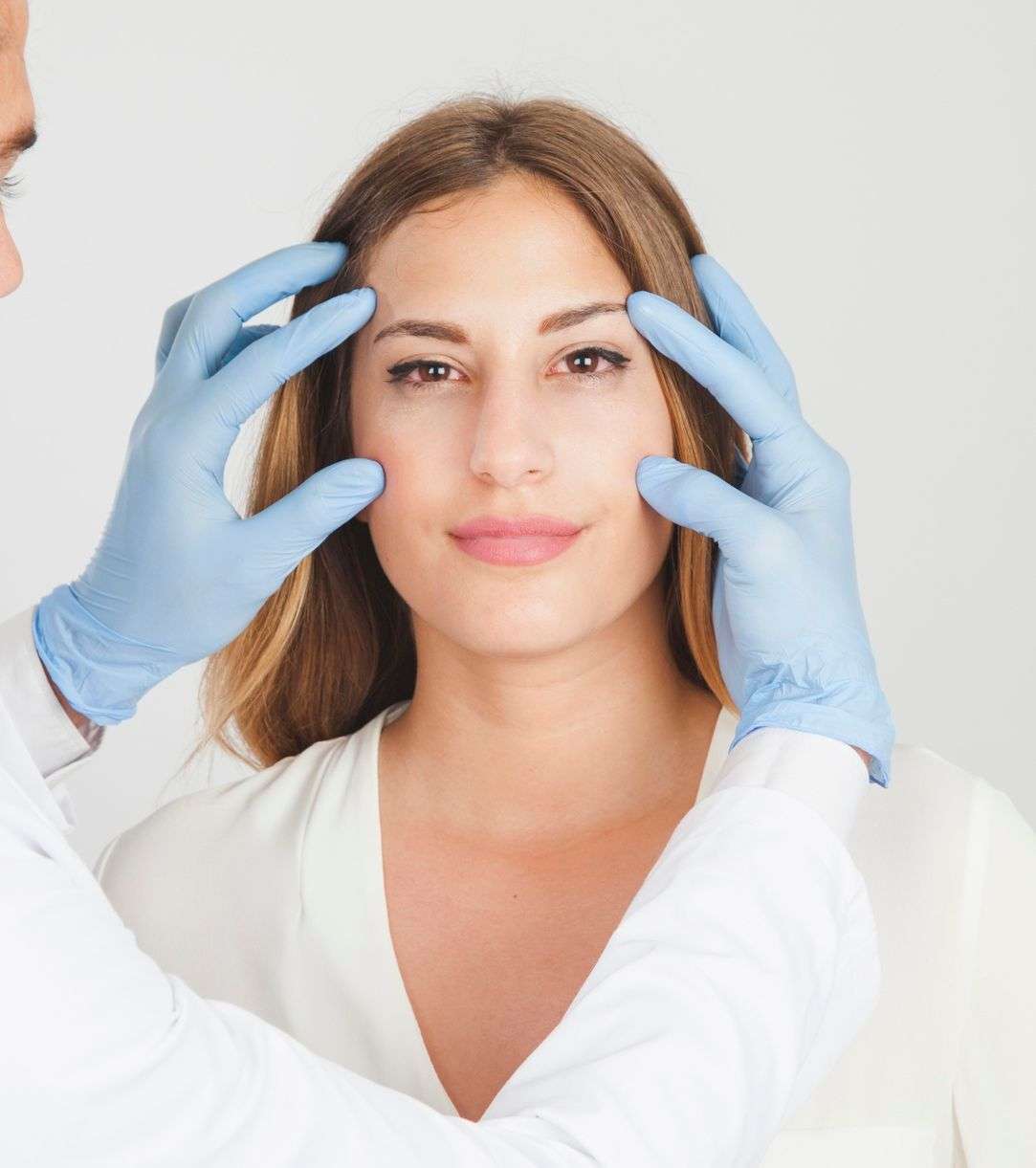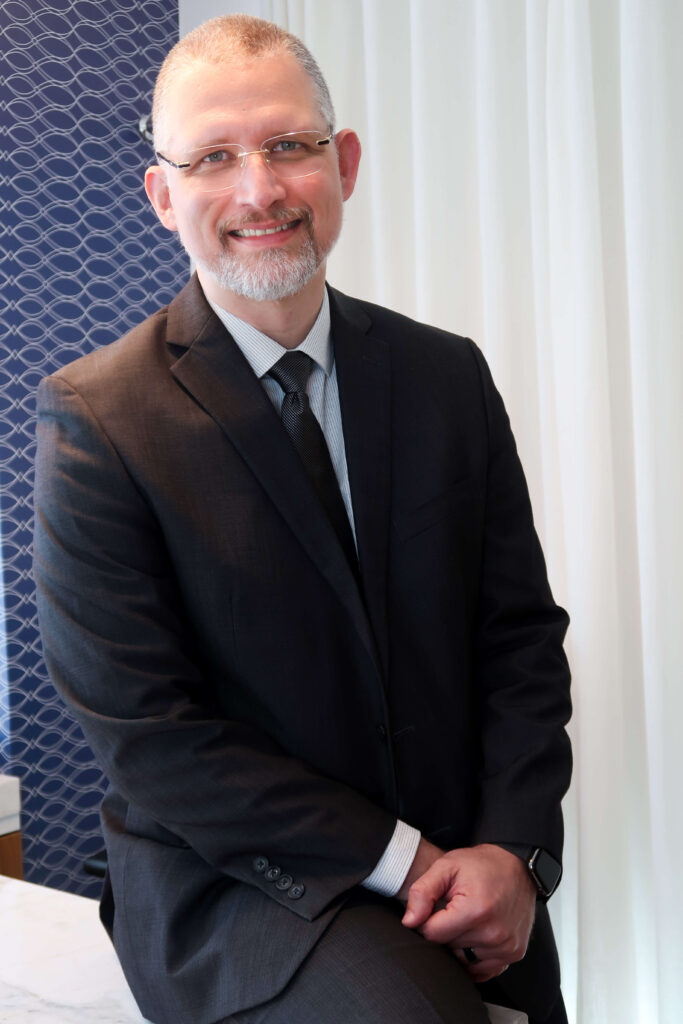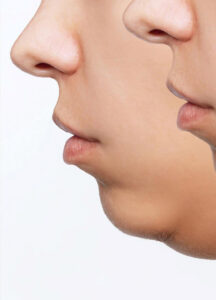

Eyelid surgery
Blepharoplasty - Eyelid Plastic Surgery
Blepharoplasty surgery involves removing excess skin and pockets of fat from the eyelids in order to alleviate the effects of ageing and achieve aesthetic harmony.
The vertical length of the upper eyelids, two fat pockets in the upper eyelids, three fat pockets in the lower eyelids, the supporting structures of the lower eyelids (tarsus) and the supericilia can be assessed. The scars are positioned in areas covered by hair or natural skin folds and are usually barely noticeable.
During Blepharoplasty, we work on the configurations of the eyelid muscles and skin and resect or mobilize the fat pockets, seeking to configure them within a certain limit, imposed by the individual anatomy and life history of each patient.
Further information about Blepharoplasty
- Surgical planning involves the use of photographs that are studied with an emphasis on individual complaints and personal characteristics. At no point can these resources be considered as predictors of a possible final outcome. These are just resources to facilitate surgical planning.
- Depending on each case, it may be necessary to carry out complementary procedures in the search for a better result. This result depends on individual characteristics and can never be guaranteed in any way.
- If changes occur after surgery, blood tests, X-rays, CT scans and electroneuromyography may be necessary to clarify the diagnosis.
- Scars evolve according to individual physiology and are generally barely noticeable, especially in the penumbra. If changes occur, there are treatments that can be used in an attempt to improve the appearance of the scars.
- There will be purple spots (ecchymoses), temporary partial or total loss of sensation and significant swelling of the face.
- Visual changes can occur in the first few days after surgery, mainly due to the swelling that occurs at the site.
- Symptoms such as irritated eyes or a feeling of sand in the eyes are to be expected in the post-operative period, especially if they were already present before the surgery. Dry eye syndrome is a normal pathology after the fifth decade of life and its symptoms are exacerbated or triggered by facial surgery.
- Blepharoplasty treats the skin and fat of the eyelids. Small wrinkles on the sides of the eyes, on the glabella and on the lower eyelids may not be treated due to technical limitations.
- Any plastic surgery is likely to require other interventions to correct small imperfections. If further intervention is necessary, there will be no charge for the surgeon’s fees, and the patient will be responsible for the hospital costs, as well as the fees of the anesthesiologist, assistant and instrument maker.
Preoperative Blepharoplasty (eyelid surgery)
- 1. Obey the instructions given for admission
- 2. Report any abnormalities that may occur in their general condition.
- 3. Enter hospital fasting for at least 8 hours and do not bring valuables into the hospital.
- 4. Come accompanied to the hospital.
- 5. Avoid wearing earrings, rings, piercings, colored nail polish, etc. Any of these will be removed before surgery.
- 6. Do not take any medication or drugs up to 10 days before the scheduled date of surgery, without prior notification to the surgeon.
After Blepharoplasty (eyelid surgery)
- 1. Apply 30 minutes of ice every 2 hours to the eyelids for the first 72 hours.
- 2. Avoid exertion and hot environments for 30 days.
- 3. Do not lower your head for 15 days, unless specifically advised by your surgeon.
- 4. Sleep with your head higher than your chest and your chest higher than your abdomen.
- 5. Get up as many times as recommended on discharge from hospital, observing the time limits for lying down or sitting, and avoiding maximum exertion.
- 6. Do not expose yourself to the sun for at least 180 days (use sunscreens or sunblocks).
- 7. Obey the doctor's prescription.
- 8. Return to the office for subsequent dressings, on the days and at the times stipulated.
- 9. Don't worry about the intermediate forms in the various phases. Ask your surgeon any questions you may have.
- 10. Normal diet (except in special cases). We recommend a high-protein diet (meat, eggs, milk) as well as fruit.
- 11. Wait to go on your "diet or slimming regime" once you have been cleared by your doctor. Anticipating such conduct on your own could lead to difficult consequences.
Other facial procedures
Surgeries and procedures performed by Dr. Celso Boechat
Other Plastic Surgeries in Rio de Janeiro
From stunning beaches to vibrant aesthetics, discover the plastic surgeries that reflect Rio de Janeiro’s beautiful spirit and dynamic aesthetic standards.
Breast surgery
Raise your self-esteem, reaffirm your beauty.
Body Surgeries
Transformations for your ideal body.
Facial surgery
Facial renewal, bring out your true expression.
Frequently Asked Questions about Blepharoplasty
Blepharoplasty: The most asked questions about eyelid surgery
There is no ideal age, only the ideal opportunity. This opportunity is determined by the presence of excess skin and/or fat in the area.
As the skin on the eyelids is very thin, scars tend to be disguised in the furrows of the skin and in some cases are almost imperceptible. To do this, wait until the scar has matured (after six months). Because of their location, they can be disguised with light make-up from the first few days.
Certain patients may be prone to unsightly scarring (hypertrophic and keloid scars). This tendency should be discussed during the initial consultation, as well as family characteristics. Fair-skinned people tend to develop this type of scarring less often.
Various clinical and surgical resources allow us to improve these unsightly scars at the right time. However, hypertrophic or keloid scars should not be confused with the natural evolution of the mediate healing period. Any doubts about your healing progress should be clarified during your post-operative visits, when the stage you are at can be assessed.
Various clinical and surgical resources allow us to improve these unsightly scars at the right time. However, the “mediate period” of normal healing (from the 30th day to the 12th month) should not be confused with a healing complication. Any doubts about your progress should be clarified with your doctor.
Due to the extent of the surgery and the good quality of the anesthetics, most cases are operated on under local anesthesia (with or without sedation). In special cases, general anesthesia can be used.
Not usually. However, if it does occur, it can be combated with the use of common painkillers.
Every medical act includes a variable risk and plastic surgery, as part of medicine, is no exception. You can minimize the risk by preparing each patient properly, but you can’t eliminate it completely.
Yes, and usually in the first 3 days when the regression begins. Edema (swelling) of the eyes varies from patient to patient. There are those who look quite natural on the 4th or 5th day. There are others who will achieve this result after the 8th day or even after 2 weeks. Even so, the first three days of the post-operative period are those in which there is the greatest “swelling” of the eyelids. The use of sunglasses can be useful at this stage, as can the use of cold compresses to reduce the intensity of the swelling. Only after the 3rd month can we say that the residual edema is discreet.
Local anesthesia: 6 to 12 hours. General anesthesia: Up to 24 hours.
Around 90 to 120 minutes. Depending on the case, there are details that can extend this time. However, surgical time should not be confused with the length of time the patient stays in the operating room, as this also includes the period of anesthetic preparation and post-operative recovery.
They are nothing more than the infiltration of blood into the underlying skin (schemosis), and even into the conjunctiva of the eye; they are due to the surgical trauma itself. These events should not be considered complications, but rather transient and reversible complications.
After the 3rd month. However, after just 3 weeks we will already have a good portion of the desired results, and in subsequent weeks the trend towards improvement is marked.
Not necessarily. Compresses with cold saline solution can be recommended for a few minutes, several times a day.
Possible risks of Blepharoplasty
BLEFAROPLASTY, like any other surgery, has risks and complications, some of which are specific to it and others generic to any type of surgery. These include:
Generic
1. Allergies: Some medications or products used during surgery can cause allergic reactions, which can even lead to death. Allergic reactions are patient-dependent and can occur either to medicines or products that the patient has never had contact with, or to those that they have had previous contact with, even if they didn’t have a previous reaction.
2. Scarring: Changes in scarring can occur, such as dark or light coloration, widening, hypertrophy or keloids. Regular post-operative visits enable early diagnosis and control of these changes
3. Hematoma: Accumulation of blood in the operated area, from a vessel that was not bleeding at the end of the operation, but did so in the immediate post-operative period.


Book your appointment
Find out everything you need in one consultation
Possible risks of Blepharoplasty
BLEFAROPLASTY, like any other surgery, has risks and complications, some of which are specific to it and others generic to any type of surgery. These include:
Generic
1. Allergies: Some medications or products used during surgery can cause allergic reactions, which can even lead to death. Allergic reactions are patient-dependent and can occur either to medicines or products that the patient has never had contact with, or to those that they have had previous contact with, even if they didn’t have a previous reaction.
2. Scarring: Changes in scarring can occur, such as dark or light coloration, widening, hypertrophy or keloids. Regular post-operative visits enable early diagnosis and control of these changes
3. Infection: Our body is colonized by countless bacteria, with which, at first, we live in extreme harmony. However, after surgery, they can cause infection, requiring treatment with antibiotics and rarely re-operation.
4. Hematoma: Accumulation of blood in the operated area, from a vessel that was not bleeding at the end of the operation, but did so in the immediate post-operative period.
5. Thrombosis: Any surgical procedure can lead to venous thrombosis. This can be predicted in predisposed patients, but can also occur in healthy patients without any predisposing factors. Thromboses can generate emboli that can cause Pulmonary Embolism, a serious condition that can lead to death.
Specific
1. Retro Bulbar Hematoma: Bleeding occurs in the posterior region of the eyeball, displacing it forward and possibly leading to blindness. In these cases, reoperation for drainage is urgently indicated.
2. Alopecia: This consists of hair loss in a small area, usually near the scars. It is a treatable complication, but it takes time and patience.
3. Ectropion: This is weakness of the lower eyelid, with detachment from the conjunctiva of the eye and exposure of the sclera. can cause chronic irritation of the affected eye. Because it is a natural evolution of the eyes with ageing, it can go unnoticed during surgery, requiring a second procedure for correction.
4. Dry Eye Syndrome: In some cases, reduced tear secretion may occur in one or both eyes. This is due to manipulation of the tissues near the lacrimal glands, leading to regional edema and reduced secretion. When caused by surgical trauma, it is temporary, requiring only the use of ophthalmic lubricants. For a variable period of time.


Appointment
Make an appointment and get your questions answered
Schedule an appointment with plastic surgeon Dr. Celso Boechat. Discover the path to aesthetic transformation and improved self-esteem. Our specialized team is ready to guide you through the procedure options, answering your questions and creating a personalized plan to suit your needs. Book your appointment now and take the first step towards a more confident and radiant version of yourself.
Send a message via WhatsApp
Service and consultations
Call Us
(21) 997336862
Opening hours
Monday to Friday - 09:00 - 21:00
Saturdays and Sundays - Closed, only for surgeries




